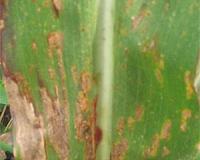 |
Seoul (AFP) Jan 6, 2011 South Korean President Lee Myung-Bak called Thursday for tighter quarantine measures to combat the rapid spread of the country's worst outbreak of foot-and-mouth disease. Since the highly contagious disease was first reported on November 29, about 948,000 cattle and pigs in 40 cities and counties have been culled, the agriculture ministry said. South Korea has since lost about seven percent of its cattle and pigs with related losses estimated at more than one trillion won (890 million dollars), it said. "Fundamental measures must be taken to contain (foot-and-mouth disease)," Lee told an emergency cabinet meeting, saying the government should step up quarantine measures and secure enough vaccine. In a desperate attempt to contain the spread of the disease, the government has vaccinated cattle and pigs -- risking a longer export ban by overseas buyers. It takes longer for a country that uses vaccinations to regain disease-free status from the World Organisation for Animal Health than when the disease is curbed solely by culling. Agriculture Minister Yoo Jeong-Bok said his ministry would try to secure vaccines for 6.5 million animals by the end of this month. The disease affects cloven-hoofed animals such as cattle, pigs, deer, goats and sheep. Previous outbreaks in January and April last year cost more than 250 billion won with nearly 50,000 animals slaughtered. The military has deployed 68,000 troops to help contain the disease while health officials were also placed on alert to curtail the spread of bird flu. More than 200,000 birds were culled or will be slaughtered after the first outbreak of bird flu since May 2008 was reported last Friday at two farms in the central city of Cheonan and in the southwestern city of Iksan. Health authorities have also placed quarantine zones to carry out emergency disinfection at three cities in south Jeolla province, where suspected bird flu cases were reported this week. South Korea has been hit by avian influenza three times, with the last outbreak in April 2008.
earlier related report The move comes in the wake of a deadly 2008 health scare sparked by the discovery that the industrial chemical melamine had been widely and illegally added to milk products to give it the appearance of a higher protein content. Firms, including baby formula makers, that fail to obtain new permits will be forced to close, the official Xinhua news agency said, citing the head of the General Administration of Quality Supervision, Inspection and Quarantine. "The requirement aims to improve quality and safety in the dairy industry," Zhi Shuping, the quality supervision minister, told a conference in Beijing. In 2008, melamine was found in the products of 22 Chinese dairy companies -- including Synutra, Yili and Mengniu -- in a massive scandal blamed for the deaths of at least six infants and for sickening 300,000 others. The discovery led to a worldwide recall of Chinese dairy products and lingering public fears at home about food quality. The government said at the time it had destroyed all tainted milk powder and gave the all-clear, but reports of melamine-laced products have regularly re-emerged since then. In July, authorities in China said they had found 25,000 tonnes of milk powder tainted with melamine. Reports of tainted red wine, bleached mushrooms, fake tofu, dyed oranges and rice noodles made with rotten grain have all surfaced in the past few months, again touching off consumer concerns about product safety.
Share This Article With Planet Earth
Related Links Farming Today - Suppliers and Technology
 University Of Illinois Research Makes Plant Breeding Easier
University Of Illinois Research Makes Plant Breeding EasierChicago IL (SPX) Jan 06, 2011 University of Illinois research has resulted in the development of a novel and widely applicable molecular tool that can serve as a road map for making plant breeding easier to understand. Researchers developed a unified nomenclature for male fertility restorer (RF) proteins in higher plants that can make rapid advancements in plant breeding. "Understanding the mechanism by which RF genes ... read more |
|
| The content herein, unless otherwise known to be public domain, are Copyright 1995-2010 - SpaceDaily. AFP and UPI Wire Stories are copyright Agence France-Presse and United Press International. ESA Portal Reports are copyright European Space Agency. All NASA sourced material is public domain. Additional copyrights may apply in whole or part to other bona fide parties. Advertising does not imply endorsement,agreement or approval of any opinions, statements or information provided by SpaceDaily on any Web page published or hosted by SpaceDaily. Privacy Statement |